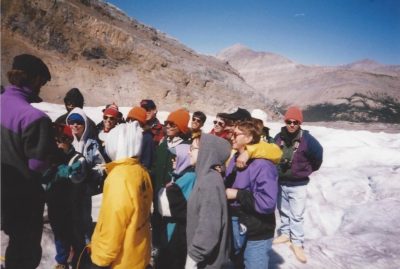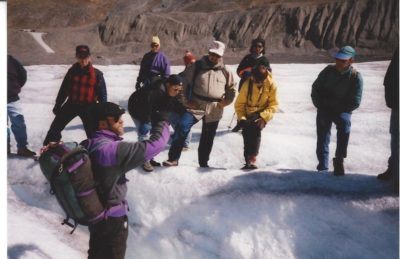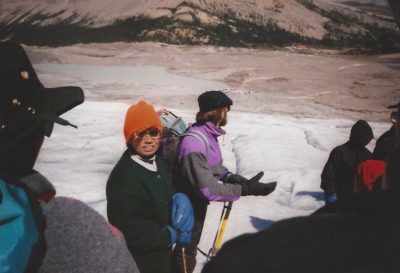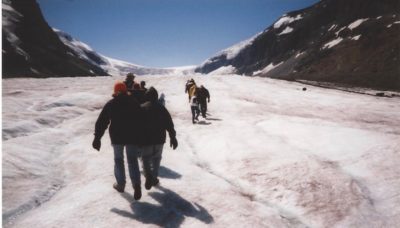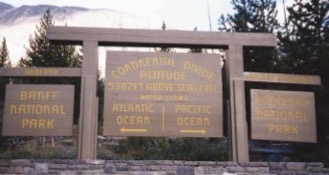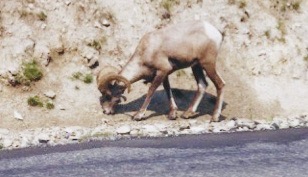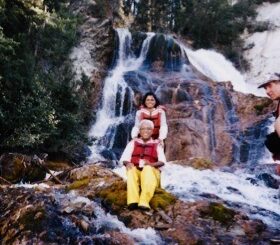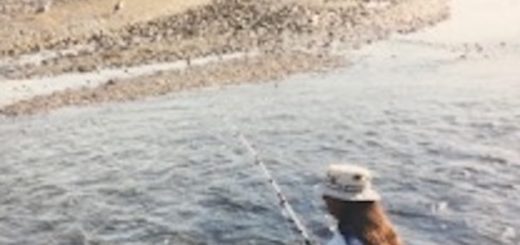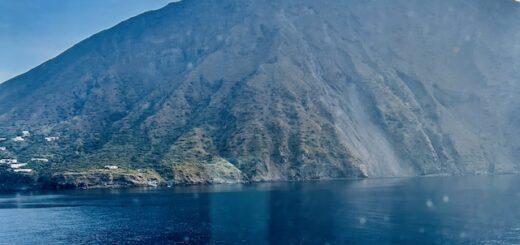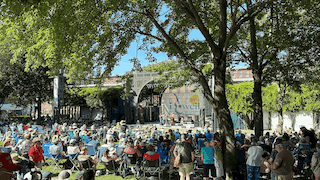Columbia Icefields, Canada
Columbia Ice fields, Canada
Columbia Icefields is the largest ice field in the Rocky Mountains of North America. We were on a national Parks trip for 17 days driving right across the country.
On August 19, 1994 we went on ice walk on Columbia Ice Fields. This walk is on Athabasca Glacier, one of dozens that flow from Columbia’s bowl of ice. The part of the glacier that descends from the ice field is a long tongue of ice about six-kilometer-long and is visited by tourist with organized tour companies which provides experienced tour guides.
Our tour began at the base close to a post marked 1965 indicating the year that the glacier extended to, giving an idea of how far it had retreated in 1994 due to global warming.
We started our walk at the bottom of the trail with loose soil, pebbles, and rocks, with quite an apprehension, at least, on my part. My husband and our son, Ashfaq, were fairly calm and did not show any hesitation in taking on the adventure. But the guide’s confident, encouraging, and clear instructions were very helpful in getting over some of the fear. The guide told us how to walk, what kind of steps to take, and the areas to step on. He was good at making people feel comfortable by remembering their names and addressing them in a friendly manner.
At the beginning of the hike he assessed all those in the group, and some who he thought may not be the right candidates were refunded their money and were advised best not to take on the hike.
At the start of our hike, we were given information on what to expect and be very alert and careful throughout our time on the ice field. To help start the climb, he cut steps into the ice with an ax he carried to make it easy for the people to step on the glacier. After the walk began we realized that it was an enormous undertaking, which had to be completed. Fear was mixed with the thrill of doing something so daunting.
We were standing on hundreds and hundreds of square kilometers of ice, which looked as though an ocean with huge waves somehow got frozen and because a larger body of water had to freeze in a smaller space, it cracked open in several places and created crevasses.
The ice was coarse and fairly easy to walk on. Most people walked with a fair amount of ease, but some who had difficulty were given a walking cane for support. The guide kept an eye on all of us and called us his ducklings.
He made several stops to explain all the special features of the glacier and also made sure to point out the photo ops.
With his firm and caring guidance, he made sure people see the beauty in the great expanse of ice, pressure ridges, meltwater channels, blue walled crevasses.
At one point, there was a huge hole in the glacier to which he took one person at a time and let them peer at the waterfall, obviously glacier melting ice into this well of beautiful blue ice cave which looked as if it was designed and built with rich blue marble. This canyon formed at the point where the force of the water was most forceful and created an awesome sight.
At the end of our hike on the ice fields, we started to come down crisscrossing around hundreds of crevasses of various shapes, sizes, and depths. The trapped water and formations with ice and water combinations were simply magnificent.
Climbing down and getting back to the normal level, we felt warm and also let down after such a tremendously exciting adventure. It was a worthwhile adventure for us.


